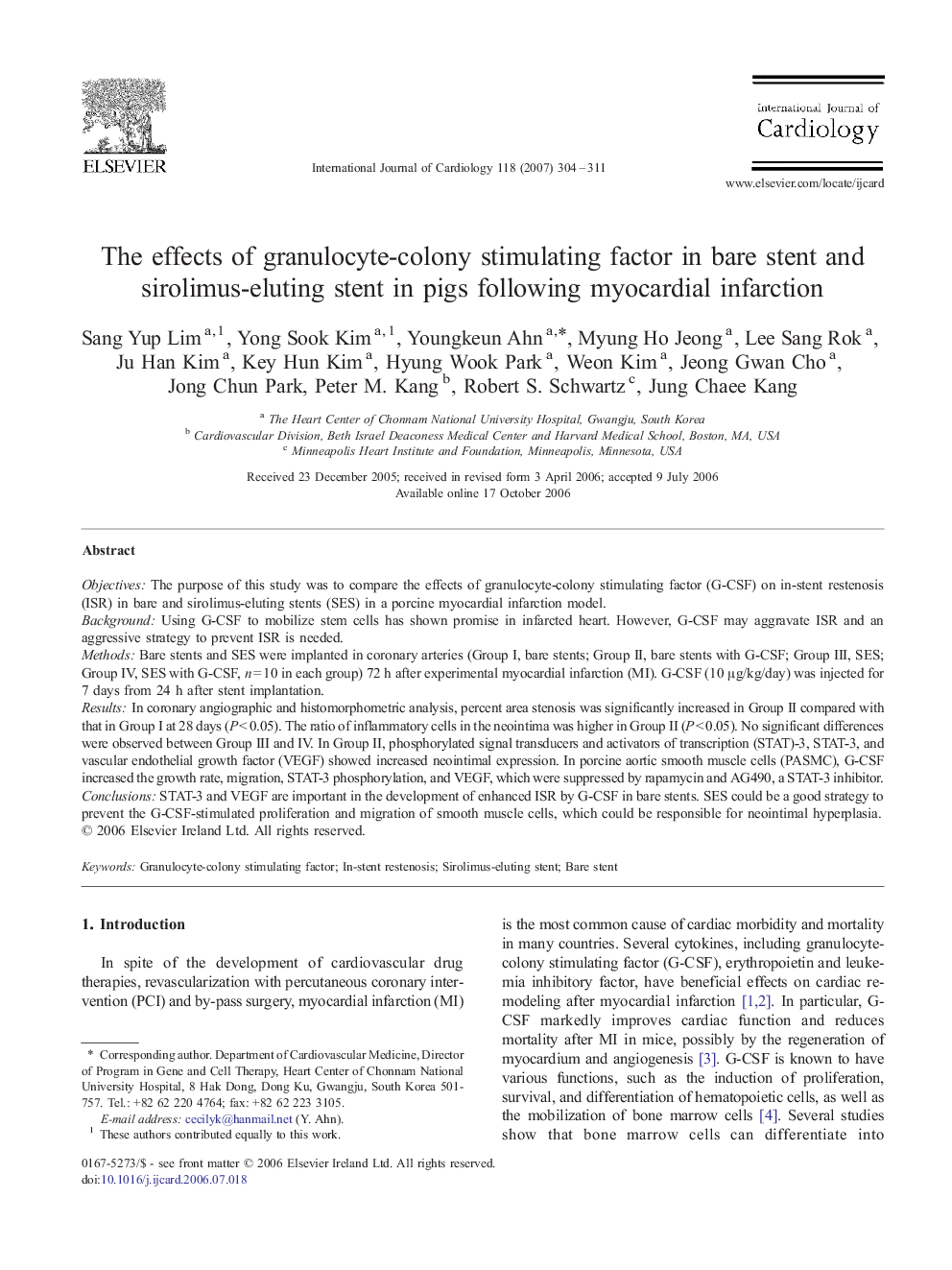| Article ID | Journal | Published Year | Pages | File Type |
|---|---|---|---|---|
| 2936326 | International Journal of Cardiology | 2007 | 8 Pages |
ObjectivesThe purpose of this study was to compare the effects of granulocyte-colony stimulating factor (G-CSF) on in-stent restenosis (ISR) in bare and sirolimus-eluting stents (SES) in a porcine myocardial infarction model.BackgroundUsing G-CSF to mobilize stem cells has shown promise in infarcted heart. However, G-CSF may aggravate ISR and an aggressive strategy to prevent ISR is needed.MethodsBare stents and SES were implanted in coronary arteries (Group I, bare stents; Group II, bare stents with G-CSF; Group III, SES; Group IV, SES with G-CSF, n = 10 in each group) 72 h after experimental myocardial infarction (MI). G-CSF (10 μg/kg/day) was injected for 7 days from 24 h after stent implantation.ResultsIn coronary angiographic and histomorphometric analysis, percent area stenosis was significantly increased in Group II compared with that in Group I at 28 days (P < 0.05). The ratio of inflammatory cells in the neointima was higher in Group II (P < 0.05). No significant differences were observed between Group III and IV. In Group II, phosphorylated signal transducers and activators of transcription (STAT)-3, STAT-3, and vascular endothelial growth factor (VEGF) showed increased neointimal expression. In porcine aortic smooth muscle cells (PASMC), G-CSF increased the growth rate, migration, STAT-3 phosphorylation, and VEGF, which were suppressed by rapamycin and AG490, a STAT-3 inhibitor.ConclusionsSTAT-3 and VEGF are important in the development of enhanced ISR by G-CSF in bare stents. SES could be a good strategy to prevent the G-CSF-stimulated proliferation and migration of smooth muscle cells, which could be responsible for neointimal hyperplasia.
